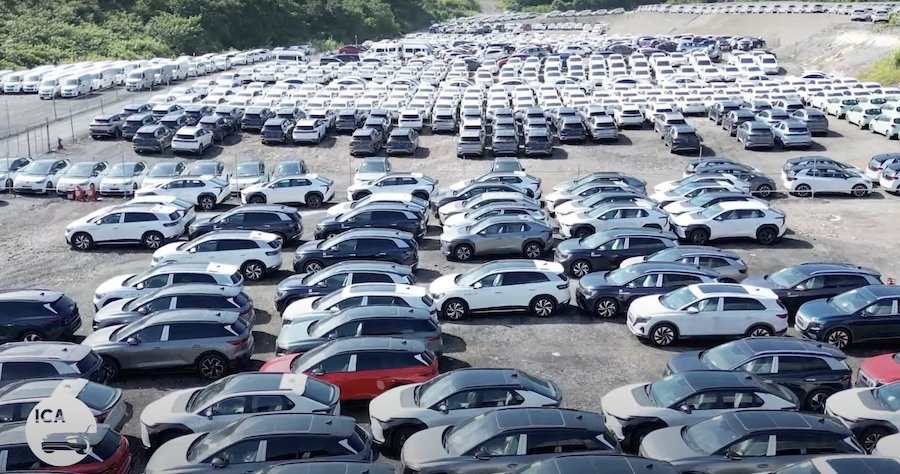Inside China’s EV Graveyard: Journalist Debunks Allegations Against Carmakers

Recently, a YouTuber alleged that Chinese carmakers were overproducing electric cars to obtain government subsidies and beef up sales figures. Shanghai-based auto expert Mark Rainford has quashed these allegations after visiting the so-called Chinese EV graveyard.
The initial accusations stemmed from drone footage of an EV cemetery near Hangzhou in the Zhejiang province, shared by YouTuber Winston Sterzel. He claimed that over 10,000 Neta V models were rotting away in a field. But Rainford’s on-ground investigation revealed that only 146 Neta V cars were parked on the field, while others were different models.
The cars aren’t new, as they have aftermarket seat covers, floor mats, and junk lying in the storage spaces, as per Rainford. The previous video showcased untouched plastic seat covers, so some EVs might have been new when they were driven to these fields.
Moreover, an EV called BAIC BJEV EC3 accounts for the majority of the units seen on the field. It's a small electric hatchback primarily used for ride-sharing purposes.
We reported previously that failed car rental businesses led to abandoned EVs. Following a brief craze for rental e-bikes in China, ride-sharing services witnessed a similar trend. Customers could find rental EVs using an app, unlock them digitally, and then drive away, said Rainford.
But on China’s city roads, public transportation is generally faster, which might have partially contributed to the failure of ride-sharing companies, as per Rainford.
The Chinese ride-sharing business models were asset-heavy, and arduous to administer, which might explain why so many of them failed, leaving behind hundreds of abandoned EVs. Moreover, taxis are cheaper in China, and the lack of unified parking spaces made renting these EVs inconvenient.
China’s EV space boomed after 2016 and the newer models are naturally more sophisticated, compared to the lackluster EC3. BAIC offered the electric hatchback initially with a 20-kilowatt-hour battery and later increased the capacity to 30 kWh. It had a range of 112 miles, but later it improved, claimed Rainford.
We couldn’t independently verify the specs. BAIC’s website doesn’t list the EC3 but instead has a more modern version called the EX3, reminiscent of the Chevrolet Bolt EV.
At the far end of the EV cemetery, several models from Toyota, Hyundai, Geely, and Dongfeng Peugeot-Citroen are parked, Inside China Auto’s drone footage shows. Many of these models are unregistered and new, possibly awaiting delivery or purchase, the presenter claims.


